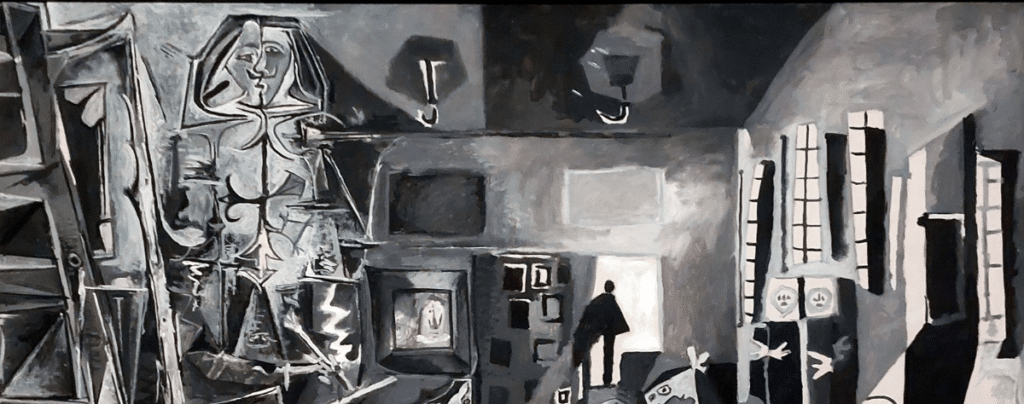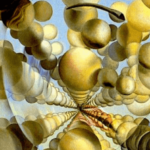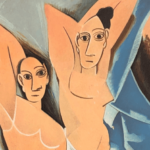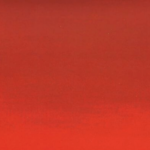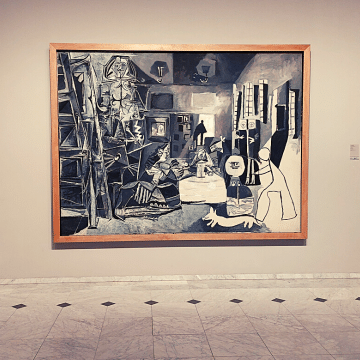
All the Pablo Picasso Museums in the World
HOW MANY PICASSO MUSEUMS ARE THERE?
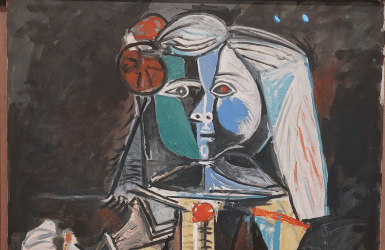
Picasso was born in 1881 in Malaga (Spain) and died in 1973 in France. He was a prolific artist that couldn't stop producing art, and his pieces have broken records every time there's one for sale at an auction. His family and friends, the French Government, as well as private collectors have made possible to everyone to live in person the experience of being in front of the works of this genius that changed art forever with his Cubism style. But where can you see his works? What are the best Picasso Museums in the world? Or at least, where can you see Picasso paintings near you or in your next trip?
From the top Pablo Picasso museums in Europe, to buildings where he lived, from key masterpieces displayed in other museums and art galleries to small and little known museums that will definitely be of interest for any true Picasso fun. You won’t find a more detailed list of Pablo Picasso Museums in the world.
Picasso museums in Spain
1
Museu Picasso (Barcelona, Catalonia)
The Picasso Museum of Barcelona is the second largest collection of Picasso paintings in the world, only after the Picasso Museum in Paris. It was created on the initiative of Picasso’s friends in Barcelona during the Franco dictatorship, opening first as a Picasso Museum under the table as the dictator wouldn’t have allowed a museum openly named after the cubist artists. With the democracy the “Art Collection of Mr. Sabartes” became finally the first Picasso Museum in Spain.
Knowing its origins, it’s not strange that it specializes in the early years of Picasso in Spain: from his training period where his father and school teachers mentored him, to his youth frequenting the bohemian and modernist circles, to his first trips to Paris including a nice collection of Blue Period paintings, as well as some Pink Period and a handful of cubist examples. Then the museum goes through a 20-years blank, ending with Picasso’s latest works, donated by the artist when he was told that his friends were creating a Picasso Museum in Barcelona. The Meninas series was his most remarkable donation, and it
2
Museo Picasso (Málaga, Andalusia)
The Picasso Museum in Malaga is the result of the collaboration of the local institutions with the heirs of Pablo Picasso. Christine and Bernard Ruiz-Picasso (grandson and daughter in law) donated over 200 pieces to the Foundation that created the museum, then Bernard has continued to send them works on loan through his own foundation. As a result, the museum offers an interesting view that includes early paintings from the artist training period, as well as works of his maturity time.
3
Museo Casa Natal Picasso (Málaga, Andalusia)
Also in Málaga, this museum occupies the building where Picasso lived during his childhood before his family moved to La Corunha and then Barcelona. It is not a “house museum” where you can see the different rooms decorated as if Picasso was still living there, though, even if the collection includes some of his family heirlooms. But it is an art museum that revolves around how Málaga influenced the artist, approaching it from different key subjects: Pablo Picasso’s family, the pigeons (that his father loved painting), the Mediterranean sea, and bullfights.
4
Museo Picasso - Colección Eugénio Arias (Buitrago del Lozoya, Madrid)
This museum is located in the Sierra Norte mountains, just over 1 hour drive outside of Madrid. Eugenio Arias was Picasso’s barber during the last 25 years of his life. Through this time, the artist gave Mr. Arias a series of paintings as a gift. When the Spanish dictatorship ended and the democracy came back, Mr. Arias returned from exile and took his art collection with him, back to his home town. The collection includes painted ceramic, drawings, etchings, as well as the box where Mr. Arias kept his barber instruments (decorated by Picasso with bullfight scenes) and a piece in metal leftovers that Picasso offered to Mr. Arias to decorate his barber shop.
5
Casa Museo Picasso (A Coruña, Galicia)
The house where Picasso and his family lived in A Coruña between 1891-95 is now a small museum that recalls the stay of Pablo Picasso in this city. The second floor, the apartment that the family occupied, has been set up to replicate the decoration of their home in those times, with the addition of replicas of Picasso’s paitings related to that period. The street level is used for art exhibits about the artist.
6
Centre Picasso (Gosol, Catalonia)
Gosol is a little village in the Pyrenees, 2 hours drive from Barcelona, that Picasso visited in 1906 together with his girlfriend Fernande Olivier, invited by a friend. The museum is located in building in the main square of the village, in front of the hostel where the couple stayed, and it explains not just Pablo Picasso’s stay in the village, but also the rural life that he got to experience. In Gosol Picasso closed his Pink period, that evolved into ochre shades inspired in the local landscape. Here Picasso sketched the famous portrait of Gertrude Stein (now in the USA)
7
Centre Picasso (Horta de Sant Joan, Catalonia)
Picasso visited twice this small village near the Ebro river, 2.5 hours drive from Barcelona. He spent there the Summer of 1898, invited by his friend Manuel Pallarés, then he went back again with Fernande Olivier during the Summer 1909. For the 16yo Picasso, his first trip to Horta was a coming of age experience: he even said that “Everything I know, I learnt it in Horta”. The museum displays replicas of the pieces Picasso painted in Horta, as well as landscapes of the villages that the artist painted later on, back in Paris.
8
Fundacio Palau (Caldes d'Estrach, Catalonia)
Josep Palau i Fabre was a Catalan writer born in a family of artists. He met Pablo Picasso and wrote over 20 books about him. Over the years he gathered a significant collection of Picasso’s works, either purchased by him or donated by the artist as a gift. The permanent exhibit of the museum is divided in two sections: one dedicated to Picasso, and another with pieces of Catalan artistst of the XX century.
9
More Spanish museums with Picasso paintings
Museo Nacional de Arte Reina Sofia (Madrid)
This is where you need to head to be shaken by Picasso’s absolute masterpiece: the Guernika. A black and white painting descriving the horrors of the Spanish Civil War, when the Nazis bombed the Basque Country. It is said that when a Nazi officer visited Picasso’s workshop and saw it, he disdainfully asked “Did you do that?”, to which Picasso replied “No: you did it”.
Are there other museums in Spain with Picasso paintings?
Sure! You’ll have some on display at the Thyssen-Bornemisza (Madrid), the MNAC (Barcelona), the Museu de Montserrat (1 hour away from Barcelona), and probably in other smaller museums as well.
Picasso museums in France
10
Musée Picasso (Paris)
You’ll find here many masterpieces, including the famous realist portrait of his son Paul dressed as an Arlequin, the Two Women Running at the beach, the ocre Two Brothers, the cubist Man with a Mandoline, the savage Grand Nude on Red Sofa, his blue Self-Portrait, and a colorful portrait of his mistress Dora Maar.
11
Musée Picasso (Antibes, Juan les Pins, Côte d'Azur)
The Castle that houses the Musée Picasso in Antibes was Picasso’s studio during the fall of 1946, when he lived in the area. He painted over 20 panels for the castle, as well as as many paintings and several more sketches, that he left there when he moved back to Paris. The museum also displays works by other artists.
12
Musée National Pablo Picasso - La Guerre et la Paix (Vallauris, Côte d'Azur)
In 1952, little after the end of War World II, Picasso lives in Vallauris and he is offered to decorate the chapel of the Castle of the village. There he executes two large panels about War and Peace, for which he drafted more than 300 different sketches.
13
Are there any other Picasso Museums in France?
Unfortunately, I must say that when this post was written, the small museum in Mougins displaying pictures of Picasso was still closed, and the new Picasso Museum that was going to open in Aix-en-Provence seems to have been a failed project in the end.
For more Picasso paintings we recommend to head to the Musée de l’Orangerie (Paris), where you’ll find a handful of paintings of women in ochre and pink shades, on display on the level -2, as well as the Centre Pompidou (also in Paris), with over 70 paintings in their Modern Art section.
Other Picasso museums in Europe
14
Ludwig Museum (Köln, Germany)
The Ludwig Museum also has the largest collection of Pop Art outside of the USA, and remarkable collections of German Expressionism, Russian Avant-garde, Abrastract art and photography. A museum that every lover of contemporary art should visit.
15
Kunstmuseum Pablo Picasso (Münster, Germany)
Münster is a city located almost 4 hours drive from Frankfurt and 1.5 hours from Düsseldorf.This museum specializes in Picasso’s lithografs, linocuts and prints. With its over 800 pieces, most of them coming from a private collection – the Huizinga collection, it’s the largest collection in the world specialized in this type of art technique.
16
Sammlung Rosengart (Luzern, Switzerland)
Luzern is a beautiful swiss city by a lake, 45 minutes drive from Zurich. A museum also born from private collections and donations, it includes over 30 paintings from the late years of Pablo Picasso, as well of a selection of photographs by David Douglas Duncan showing Picasso on his daily life.
17
Other European museums with Picasso works
- National Gallery of Prague (Czech Republic). 19 paintings including a famous Self-Portrait and several cubist pieces.
- Peggy Guggenheim Collection (Venice, Italy). 7 pieces from Cubism to Surrealism.
- Basel Art Museum (Basel, Switzerland). 1 room dedicated to Pablo Picasso on their second floor.
- Pushkin Museum (Moscow, Russia). Some paintings in the Gallery building dedicated to the masters of the Impressionism and Post-Impressionism.
- Albertina Museum (Wien, Austria). A dozen paintings displayed as part of their permanent collection (Batliner Collection).
More museums with Picasso paintings around the world
18
USA museums with Picasso paintings
- MOMA (New York). This is where you need to pilgrim to see the painting that changed art history forever: the famous Demoiselles d'Avignon are considered Picasso's first cubist painting ever, and that only painting eventually influenced an entire generation of artists.
- MET (New York). If there’s one painting you need to see there is the portrait of Gertrude Stein, one of his main art dealers. Her face looks like a static mask rather than a human face, and it is believed that this mask concept would later on evolve into Cubism.
- Philadelphia Museum of Art. Don’t miss here the Three Musicians, a large colorful painting that is considered Picasso’s farewell to his cubist period.
- Solomon R. Guggenheim Museum (NYC). They own over 30 paintings, that rotate on display.
- Art Institute Chicago. They feature a beautiful example of Picasso’s “classic” period, Mother and Child. This lesser known period in Picasso’s art appears after his trip to Rome where he got in contact with the Renaissance art, mixed with the birth of his first son, Paolo.
- National Gallery of Art (Whashington). The Tragedy is a striking example of the sadness that surrounded Picasso during his Blue Period. The Family of Saltimbanques, instead, leads us to the recovery of joy he lived during the Pink Period.
- Cleveland Museum of Art. La Vie (Life) is probably one of the most striking paintings from the blue period, going through the different times of a human life, from motherhood and childhood, to adulthood and old age.
19
Museums with Picasso Paintings in Japan
- Hakone Open-Air Museum (Japan). Hakone is located some 2 hours outside of Tokio. This open air museum is famous for its Sculpture garden, but it also features an entire pavilion dedicated to Picasso’s works. The collection approaches Picasso’s art from different angles, including different styles and periods, favorite themes and people in the artist’s life.
- Kawamura Memorial DIC Museum of Art. Located 1 hour outside of Tokio, they dedicate one entire room to Pablo Picasso’s print art (etchings and drypoints). They also have one painting in their room about French Impressionists.
How many Picasso Museums have you visited already?
Marta
RESEARCHING FOR A TRIP IS TIME-CONSUMING…
Need more inspiration?
Our 100% FREE Barcelona Collection will give you everything you need to organize the trip of your lifetime to Barcelona.
BEST INSIDER TIPS FROM THE PROS!


